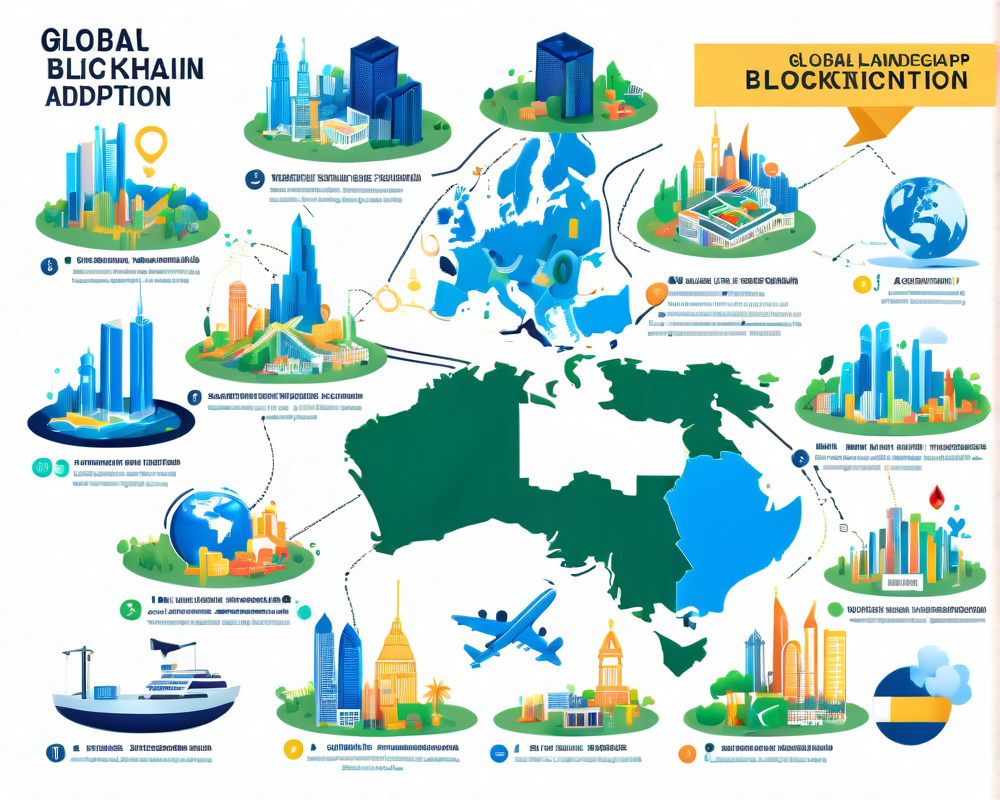Understanding Blockchain Adoption Trends Worldwide
Blockchain technology is shaking hands with various industries globally, but just like a party where not everyone gets invited, its adoption is unevenly distributed. From Europe to Africa, different regions are experiencing varying trajectories of blockchain integration. Let’s dive into this technological roller coaster ride around the globe.
Middle East: The Emerging Tech Oasis
In the Middle East, a tech renaissance is underway as countries like the United Arab Emirates and Saudi Arabia set up free economic zones aimed at nurturing innovation. According to Saba Kifle from Miami Devcon, these zones have transformed how governments view blockchain, fostering investment in exciting new projects.
- Forecasts from IDC predict a whopper of a 400% increase in blockchain investments in the region by 2023.
- From $21 million in 2019 to a proposed $105 million in 2023—talk about a leap!
However, challenges still loom. Jyoti Lalchandani from IDC mentions that while the fascination is strong, many governments need to play catch-up in developing the necessary digital infrastructure.
Europe: The Blockchain Trailblazer
Europe seems to have the makings of a blockchain superpower thanks to its supportive regulatory environment and the European Union’s forward-thinking initiatives. The executive body of the EU has rolled out the European Blockchain Partnership, aiming to create a seamless network of blockchain nodes.
“We are seeing continued investments that give Europe a competitive advantage.” – Marc Tavener, INATBA Executive Director
From Estonia’s early adopter status to the broader EU’s focus on public-private partnerships, Europe is paving the way as a leader in blockchain technology.
United States: Big Dollars and Bright Ideas
As the darling of blockchain investment, the United States holds the winning ticket in the blockchain lottery. In 2019 alone, $1.1 billion was poured into blockchain ventures, comfortably surpassing Europe’s $661 million. Jeff Barroga from Paxful notes that with government backing and pilot projects on the rise, the U.S. is forging a path for widespread acceptance of this tech.
- Expect more pilot projects as officials begin to see the real-world potential of blockchain.
- Blockchain’s reputation is also changing, shedding shadows cast by its cryptocurrency buddies.
China and East Asia: Riding the Blockchain Wave
As the sleeping giant, China aims to rise to the challenge of blockchain development. The Chinese government has listed blockchain technology as a pillar of its future economic strategy. The focus is shifting toward strategic blockchain implementation rather than just productivity.
With predictions of Asia-Pacific blockchain spending soaring to $2.4 billion by 2022, China, holding roughly 70% of regional spending, is poised to command the spotlight. The allure of blockchain is pulling many countries towards an economic renaissance fueled by this technology.
Africa: The Untapped Frontier
Africa is catching the blockchain fever, with the potential to bring digital finance to millions of unbanked individuals. According to Akin Sawyerr, blockchain can be a beacon of hope for those sidelined by traditional finance. With over 60% of sub-Saharan Africa considered unbanked, the stage is set for a massive technology uptake.
- There’s a youthful population eager to embrace tech.
- Digital transactions are on the rise, indicating openness to new innovations.
Latin America: The Crypto Renaissance
Latin America is not sitting on the sidelines. Innovations are brewing rapidly, with countries exploring blockchain solutions to combat economic crises and hyperinflation. Uruguay is even attempting to attract crypto startups through free trade zones, proving that crypto can conquer continents.
Complications on the Horizon
But wait—every rose has its thorns. Blockchain still encounters several barriers such as interoperability issues and a hefty energy cost. However, industry leaders are on it, aiming to find sustainable solutions and overcome regulatory hurdles.
According to the International Standards Organization, the absence of universal regulations presents a daunting obstacle. Yet, with creativity, collaboration, and a sprinkle of determination, the way forward looks bright for blockchain globally.




